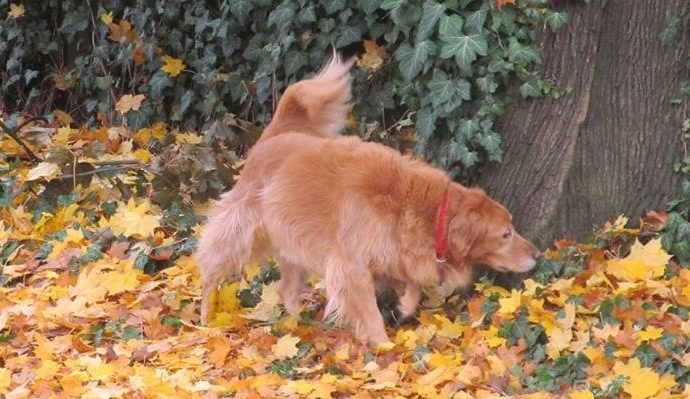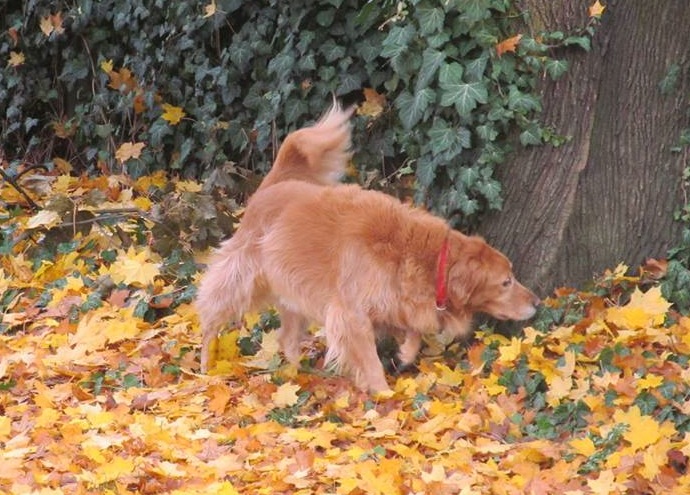
Oh, our enthusiasm when we first found a new training treat for our dogs, a decade or so before the end of the last century. We were training in obedience and agility, for competition, and we were big on food rewards.
I’m not embarrassed by that admission. We believed in rewards at a time when punishment was far more prevalent as a training method.
But, boy, did we ever make a bad call on those treats. They were awful.
- They looked like little squarish pieces of raw meat, beef red and fat white.
- They broke up easily into smaller bits because they were soft, malleable.
- They came in foil packets that fit well into our voluminous trainers’ pockets.
- They never spoiled . . . although, if left out, they did eventually turn hard as rocks.
- We bought these treats at the grocery store and our dogs loved them!
I hereby apologize to all the dogs I ever fed these treats to, and to the other innocent owners who followed my example. I was wrong to recommend them. I’m sure there was something available at the time that would have been a worse choice for feeding to our beloved canines, but I never discovered it. It was unwise, unthoughtful, and just plain dumb to feed those treats to our dogs, especially in the large amounts we used at the time.
I’m sure the ingredients have changed somewhat since then, but here’s a list of what’s in one version that’s still sold today:
Chicken, Corn Syrup, Soy Flour, Wheat Flour, Corn Starch, Water, Propylene Glycol, Animal Fat (BHA Used As A Preservative), Animal Digest, Calcium Sulfate, Soy Protein Concentrate, Sugar, Beef, Potassium Chloride, Salt, Phosphoric Acid, Titanium Dioxide, Sorbic Acid (Used As A Preservative), Red 40 Lake, Garlic Powder, Natural Smoke Flavor, Iron Oxide, BHA (Used As A Preservative), Citric Acid (Used As A Preservative).
Vitamin, mineral enriched.
Calcium fortified for strong bones and teeth.
Doesn’t that sound like a really yummy treat? They looked like little fat beefsteaks . . . as if looks matter to dogs! I wonder now if our pets were so enthusiastic about them because we, their owners, were so excited to have found them.
We all would’ve been much better off if we’d stuck to cheese, turkey hot dogs, or pieces of their own kibble. Instead, we fed our dogs junk food!

Don’t Feed Your Dog Junk Food
Please, not now, not in this century, when so much more is available. Read the labels, whether you’re shopping in a grocery store, at a locally owned pet supply shop, or online. Lists of ingredients are mandatory. (If only reading them were mandatory for owners before purchase!)
- Do you avoid preservatives in your own food? Then certainly you should avoid preservatives in your pet’s food and treats.
- Do you prefer fresh over frozen, canned, or packaged? Why would your pet not deserve the same?
- Do you keep track of particular foods or ingredients that cause unpleasant reactions, like digestive issues, for you or a friend or family member? Of course, you should keep track of your pet’s reactions to foods and ingredients, too.
- Do you base your buying decisions on cost alone? The cheapest dog treats are highly unlikely to be the best.
- Do you purchase only pet treats that are easily available at your usual grocery store? Brands of treats that are widely available at grocery and discount stores do not necessarily get the best reviews from veterinary nutritionists. Big advertising budgets and famous names don’t automatically translate into the most healthy ingredients.
It may actually be quite convenient for you to shop online for good-quality treats. In the long run, they’re no more expensive than what you’re buying at the grocery store, and they’re far better for your pet. Or plan regular visits to a locally owned pet supply store with knowledgeable employees, where you can get the help you need and feel good about what you buy . . . without spending a fortune.
Make Healthy Treats at Home
Want to control what goes into your pet’s treats? Make those treats yourself at home!
I’m a big proponent of frozen treats myself, because freezing allows you to combine multiple ingredients into a compact form which (in theory) can take your pet longer to eat. I’ve used KONGs and ice-cube trays for many years to make frozen treats, and I’ve recently expanded my repertoire to include trays with molds shaped like dog bones and paw prints. Very fun for making layered treats like the “candy corn” of blended bananas, plain yogurt, and pumpkin that I created for Halloween. The dogs approved!
Vegetables make great treats, too. Some dogs like carrots and green beans and apple slices, raw. Some like their veggies cooked. I bake yam and sweet potato slices to “dehydrate” them on cookie trays in a 250-degree oven for as long as it takes to dry them out. Yes, I flip them every hour and yes, they make my house smell great.
I’ve known several dogs who worked for pasta, like tortellini (although I’d check with a veterinarian before making pasta a regular part of my treating routine). I know a couple of small dogs who are trained with Cheerios!
String cheese is another standby because it can be low-fat, lasts a long time in the fridge, and is easy to tear up into little pieces. (Because treats should be small.) Cooked chicken, turkey hot dogs, and cut-up cheese all can be prepared relatively easily at home.
Do Your Dog a Favor
Help him stay healthy while he’s being trained and treated. Don’t feed junk treats just because they’re easy to find, have a brand name, and are relatively cheap.
- Read and research what’s actually in each treat before you buy.
- Ask your veterinarian.
- Find a locally owned pet supply store whose staff you trust.
- Feed your dog treats with as many “good” ingredients and as few “bad” ingredients as possible.
- Make treats at home from safe ingredients.
Don’t feed your dog treats that look like tiny steaks—please!



